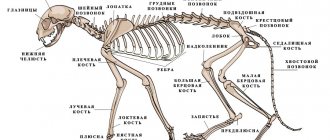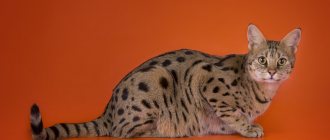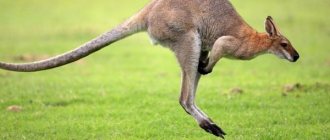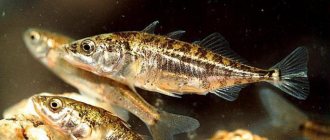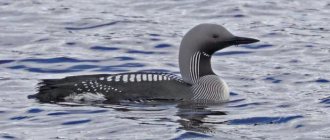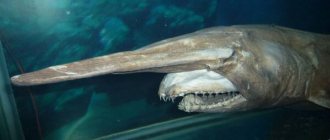“Nautilus” is the name of the underwater ship of the brave captain Nemo in the work of Jules Verne, which everyone, without exception, has probably heard of. Its memorable feature was that it sometimes appeared over the ocean and miraculously disappeared from its pursuers without a trace. Captain Nemo's sea vessel was named after the mysterious and unique inhabitant of the sea kingdom - the nautilus.
Who are Nautiluses?
There are a number of cephalopods, of which up to 6 species are known, two of which are currently considered extinct. During the Paleozoic era (about 500 million years ago), some of them populated the earth's oceans. The special uniqueness of these species is the external spiral-shaped twisted shell, which gives them an ambiguous, attractive appearance. The most popular species is Nautilus pompilius, a large mollusk. In general, all animals of this type are similar to each other, the difference is observed only in the habitat and some individual characteristics of the mollusk shells. Nautilus pompilius are considered the largest, the second name of which sounds like imperial. The diameter of the shell can reach 25 cm. Macrophalus nautiluses are traditionally considered the smallest, measuring up to 16 cm.
Classification [edit]
Classification of species within the nautilus
has been a source of controversy for decades, and the definition of the genus has been subject to revision throughout its history.
Nautilus
is the type genus of the family Nautilidae, which was originally defined as any type of spiral shell with simple sutures or walls between the compartments.
[6] Any shells with complex sutures were assigned to the genus Ammonites
.
This genus designation persisted from its introduction in 1758 by Carl Linnaeus until 1949, when paleobiologist Arthur C. Miller gave a detailed description of the shell of Nautilus Pompilius
, which became the type species of the genus.
[6] [7] In 1951, he determined that the genus could only describe living species of Nautilus
, despite the fact that many fossil species had already been assigned to it. [6]
However, years after this conclusion, two recently discovered fossil species were still assigned to this genus, namely Nautilus Ucrainicus
and
Nautilus Praepompilius
, found in Ukraine and the Ust-Yurt plateau, respectively. [6] However, these species have since been dropped from the genus. [4]
As of 2010, 11 species have been described, some of which have multiple variants or subspecies. Details of their classification are listed below. [4]
| Described species | Status |
| N. pompilius | Valid |
| N. ambiguus | Nomen Dubium |
| N. graduate | Nomen Dubium |
| N. belauensis | Valid |
| N. macromphalus | Valid |
| N. scrobiculatus | Reclassified as Allonautilus |
| N. umbiliculatus | Synonym of N. scrobiculatus |
| N. perforatus | Synonym of N. scrobiculatus |
| N. texturatus | Synonym of N. scrobiculatus |
| N. stenomphalus | Valid |
| N. repertus | Nomen Dubium: probably a giant form of N. Pompilius [4] [8] |
Species controversy[edit]
There has been much debate over the suitability of species within the genus, and several identified species have since been reclassified or designated as taxonomic synonyms or nomen dubium
(dubious classification).
As of 2015, only four species of Nautilus
, namely
N. Pompilius, N. Macromphalus, N. Stenomphalus
and
N. Belauensis.
[5] Nautilus Scrobiculatus, now
Allonautilus Scrobiculatus
has been placed in a new genus, [1] and several species listed above have been identified as synonyms of this species, namely
N. Umbiculatus, N. Perforatus
and
N. Texturatus [4]
.
Much of the confusion in species classification stems from the rarity of living species. Most of the described species are identified only from drifting shells of individuals, which leads to inaccuracies in determining species divisions. [9] In fact, it was not until 1996 that soft tissue from any Nautilus [5]
.
Historical value
Nautilus is a cephalopod that is related to octopuses, cuttlefish and squids. The shells of these sea inhabitants were discovered by the ancient Greeks, but the mystery of their structures could not be understood until 1892. It was then that Richard Owen (the famous paleontologist and zoologist) asked a doctor friend who was heading to the Pacific Ocean to bring a sample of the creature that lives in this shell. The doctor managed to obtain a live nautilus and immediately sent it to Owen for further research. The scientist was able to find out that this species of animal belongs to cephalopods. This means that the nautilus is a marine mollusk with a large head and many “arms”. In most cephalopods the shell is hidden in the middle of the body, but in our nautiluses it is external.
Evolution [edit]
In addition to species identification, genetic studies have also provided evidence of the evolution of the genus over time. Mitochondrial DNA studies have shown that the genus is currently undergoing an evolutionary radiation in the Indo-Pacific region. [10] Divergence between the genus Nautilus
and its sister taxon
Allonautilus
probably occurred in the New Guinea and Great Barrier Reef region [10] during the Mesozoic.
Nautilus
populations split further, including migrations east to Vanuatu, Fiji and American Samoa, and west to the Philippines, Palau, Indonesia and western Australia. [10]
Nautilus (mollusk): photo of shell structure
The spiral shell with a diameter of 15-23 cm is divided into 38 chambers, which are connected one after another by a siphon. The mollusk itself lives in the last, largest chamber. The shell is used as a float and ballast. By collecting biogas into the compartments or pumping it out of them, the nautilus can float to the surface of the water or descend into its very thickness. The shell wall consists of two layers, the outer layer being deposited by the edge of the mantle. This layer is similar to porcelain and, accordingly, is called porcelain-like. Beneath it lies an inner layer that has a pearlescent sheen; such a shell is called mother-of-pearl. And also the nautilus, in comparison with other cephalopods, has 4 gills, the heart has four atria. The brain and eyes of the nautilus are very simple.
Golden ratio in architecture
The phi proportion is present in the architecture of the Great Pyramid, in the triangle arising from the height, half the base and the apothem, that is, the diagonal. In other words, the main section of the pyramid gives us the golden ratio. If we take the length of half the base as 1, the length of the apothem gives us phi, and the height gives us the square root of phi. The Golden Ratio appears again and again in Giza and is often complex and confusing (entire volumes have been written about the geometry of the Great Pyramid).
Nautilus pendant, silverPrice: $120 USD | Nautilus pendant, goldPrice: $608 USD |
Fibonacci pendant, silverPrice: $113 USD | Fibonacci pendant, goldPrice: $272 USD |
Pendant "Golden Ratio Spiral", silver, smallPrice: $112 USD | Pendant "Golden Ratio Spiral", gold, smallPrice: $696 USD |
Pendant "Golden Spiral", goldPrice: $914 USD |
The body of the nautilus and its features
The body of this animal consists of a head and a torso. The leg complements the typical image of all mollusks, which has changed over time, and now it is a funnel. It consists of a wide sole and leads into the mantle cavity, thereby performing the function of a motor. Thanks to this, the mollusk floats and moves slowly along the bottom.
The shell of the nautilus is its real home. A special hollow tube allows the animal to pump gas and water into the chambers of its wonderful shell in order to swim at a specific depth. If he needs to go lower, he adds water to his sink, and to go up, he fills the chambers with gas. The animal's body itself lives in the largest chamber spiral. In a kind of hiding place, the Nautilus pompilius, a cephalopod mollusk, hides, exposing its tentacles, as well as its mouth, which looks a little like a beak. He does not have suction cups on his arms, like an octopus, but despite this, they are still quite strong. The nautilus (mollusk) grabs a crab or fish with them and sends its prey into its mouth.
Body systems
The body systems that the nautilus has deserve special attention. The mollusk, whose structure differs from similar cephalopods of the sea, has two pairs of gills, four kidney sacs and atria. Its nervous system consists of three ganglia.
This mollusk lacks the gland that produces the ink liquid. The eyes are quite primitive. There are no external photoreceptors, vitreous body or lens. But the olfactory organs are well developed. He uses them while hunting.
A mantle with a muscular wall covers the entire body of the nautilus. When contracting, this organ strongly pushes water through the mantle cavity. This pushes the animal backwards. When relaxed, the cavity fills with water again.
Clam House Features
The shell of the sea creature is very fragile. The nautilus (mollusk), as a rule, does not descend deeper than 500 m, since its chambers are not able to withstand high water pressure and burst in an instant. In such cases, nothing can help the nautilus; it will never surface again. Due to their characteristics and features, all nautiluses live close to the surface. They usually scurry around in search of food at a depth of 20-100 m and near coral reefs. Nautilus pompilius, a mollusk whose photo is presented in the article, leads a benthic lifestyle. Its diet includes carrion and plants. He can go hungry for a very long time, going without food for about a month.
a brief description of
- Name: Nautilus pompilius (ship).
- Latin name: nautilus pompilius.
- Type: mollusks. Class: cephalopods.
- Main differences: spiral shell of contrasting color: light at the bottom, dark at the top; with cameras.
- Size: up to 26.8 centimeters.
- Habitat: tropical waters, especially near deep-sea coral reefs.
- Food: remains of lobster shells, hermit crabs, carrion.
- Lifestyle: during the day it stays at a depth of 300-600 m, at night it rises upward (to a depth of 100-150 m) to get food.
Nautilus and man
The mother-of-pearl inner layer of the shell made this animal a famous object of extremely successful fishing. They were especially highly valued in the 16th century, where they were used to create bowls and jewelry. Today, the fashion for mother-of-pearl is still relevant. In addition, people love to keep them in aquariums, but since the nautilus (mollusk) is expensive, only rich people can afford to keep it in their aquarium. In pet stores you can see a copy for a thousand dollars. It must be remembered that an animal needs a container of at least 500 liters.
Links[edit]
- ^ abc Ward, P. D. & W. B. Saunders 1997. Allonautilus: a new genus of modern nautiloid cephalopods and its impact on the Nautilida phylogeny. Journal of Paleontology 71
(6):1054–1064. - ^ ab Wani, R.; and others. (2008). "First fossil discovery of Nautilus pompilius
(Nautilidae, Cephalopoda) from Pangasinan, northwestern Philippines."
Paleontological Research
.
12
(1): 89–95. DOI: 10.2517/1342-8144 (2008) 12[89:FDOFNP]2.0.CO; 2. - "CITES Species Checklist".
- ^ abcdefghijklmnopqrstu vwxyz Saunders, W. Bruce. Landman, Neil H. (2010). Nautilus: biology and paleobiology of a living fossil
. Springer. ISBN 978-90-481-3298-0. OCLC 613896438 .CS1 maint: multiple names: authors list (link) - ^ abcdef Ward, Peter; Dooley, Frederick; Barord, Gregory Jeff (2016-02-29). "Nautilus: biology, systematics and paleobiology through the eyes of 2015." Swiss Journal of Paleontology
.
135
(1):169–185. DOI: 10.1007/s13358-016-0112-7. ISSN 1664-2376. S2CID 87025055. - ^ B s d e e Teichert, Curt; Matsumoto, Tatsuro (1987), "Origin of the genus Nautilus", Topics in Geobiology
, Springer, USA, pp. 25–32, DOI: 10.1007/978-1-4899-5040-6_2, ISBN 978-1-4899-5042- 0 - Jump up
↑ Miller, AK (September 1949).
"Last surge of nautiloid cephalopods". Evolution
.
3
(3): 231–238. DOI: 10.2307/2405560. ISSN 0014-3820. JSTOR 2405560. PMID 18138384. - ^ abcd Combosch, David J.; Lemer, Sarah; Ward, Peter D.; Landman, Neil H.; Giribet, Gonzalo (07.10.2017). "Genomic signatures of the evolution of Nautilus, an endangered living fossil." Molecular Ecology
.
26
(21):5923–5938. DOI: 10.1111/mec.14344. ISSN 0962-1083. PMID 28872211. - ^ abcd "Reels of Time". Discover the magazine
. Retrieved May 12, 2022. - ^ abcd Bonacum, James; Landman, Neil H.; Mapes, Royal H.; White, Matthew M.; White, Alicia-Jeannette; Irlam, Justin (March 2011). "The evolutionary radiation of modern nautilus and allonautilus". American Malacological Bulletin
.
29
(1-2): 77–93. DOI: 10.4003/006.029.0221. ISSN 0740-2783. S2CID 86014620. - Ray, Charles G.; Landman, Neil H.; Saunders, W. Bruce; Bonacum, James (1995). "Genetic divergence and geographic diversification in the Nautilus". Paleobiology
.
21
(2): 220–228. DOI: 10.1017/s009483730001321x. ISSN 0094-8373. - ^ abc Barber, V. C.; Wright, D. E. (1969). “The fine structure of the sensory organs of the cephalopod Nautilus.” Zeitschrift from Zellforschung und Mikroskopische Anatomie
.
102
(3):293–312. DOI: 10.1007/bf00335442. ISSN 0302-766X. PMID 4903946. S2CID 19565604. - Dunstan, A.; Alanis, O.; Marshall, J. (November 2010). "Nautilus pompilius fishing and population decline in the Philippines: comparison with an unexploited population of the Australian Nautilus." Fisheries Research
.
106
(2):239–247. DOI: 10.1016/j.fishres.2010.06.015. ISSN 0165-7836. - Chamberlain, John A.; Ward, Peter D.; Weaver, J. Scott (1981). "Postmortem ascension of Nautilus shells: implications for cephalopod paleobiogeography". Paleobiology
.
7
(4): 494–509. DOI: 10.1017/s0094837300025549. ISSN 0094-8373. - ^ abc Dunstan, Andrew J.; Ward, Peter D.; Marshall, N. Justin (February 22, 2011). "Vertical distribution and migration patterns of Nautilus pompilius". PLOS ONE
.
6
(2):e16311. DOI: 10.1371/journal.pone.0016311. ISSN 1932-6203. PMC 3043052. PMID 21364981. - ^ abc Landman, Neil H.; Cochran, J. Kirk; Rye, Danny M.; Tanabe, Kazushige; Arnold, John M. (1994). "Early history of the Nautilus: evidence from isotope analysis of aquarium-reared specimens." Paleobiology
.
20
(1): 40–51. DOI: 10.1017/s009483730001112x. ISSN 0094-8373.
One day in the active life of a nautilus
This animal finds its immediate prey thanks to one primitive eye; it looks like a camera without a lens and can recognize light and movement. During the daytime, the mollusk tries to stay at a depth of 300 m, sometimes climbing to the surface of the sea or grabbing a stone with its long tentacles. At night, the mollusk swims upward, but rarely rises above 100 m, since warm water is detrimental to it.
Discography
Studio albums
- 1983 – “Moving”
- 1985 – “Invisible”
- 1986 – “Separation”
- 1989 – “Prince of Silence”
- 1990 – “At Random”
- 1991 – “Born on this night”
- 1992 – “Foreign Land”
- 1994 – Titanic
- 1995 – “The Man with No Name”
- 1996 – “Wings”
- 1997 – “Apple China”
- 1997 – “Atlantis”
Live albums
- 1993 – “Lights Out”
- 1994 – Titanic Live
- 1994 – “Neither Cable”
- 1996 – “Split”
- 1996 – “Acoustics (Best Songs)”
- 1997 – “Rise”
Interesting fact
The nautilus mollusk, as we have already found out, is a close relative of animals such as octopuses and squids. They are smart, agile, dexterous and move with the help of a “jet stream”, pushing water out behind them under strong pressure. This helps them get food, swim out and descend to depth. A hollow tube in the middle of the body (funnel) acts like a siphon, through which liquid is sucked in or released. The siphon can only pass a small amount of water, so the mollusk moves quite slowly and in peculiar jerks. It seems to freeze in the depths of the sea, somewhat reminiscent of an ancient airship. A unique feature of this animal is that it moves backwards.

